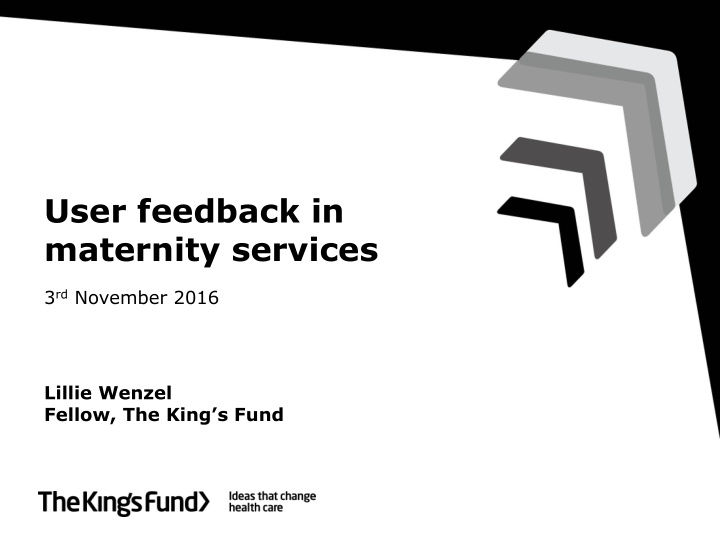



User feedback in maternity services 3 rd November 2016 Lillie Wenzel Fellow, The King’s Fund
Our research Objectives: › Understand range and • benefits of local tools Highlight enablers • Methodology : › Literature review • Interviews with providers •
Why collect feedback? ‘Because the population you serve evolves, and different communities Monitoring and need different things’ accountability Service improvement ‘You don’t know you’ve got a good service, unless Comparison women are and choice confirming that that’s how it felt for them’
Different approaches Direct Advocacy Reactive approaches approaches approaches Proactive Feedback Collation of collection of relayed by a feedback which feedback third party is unsolicited
Some examples… ?
The right tools? Information generated must be representative and actionable Targeting - capturing a range of views › ‘…it’s a bit too much for Timing – when and how often › people, so they j ust don’t do Anonymity – ‘accuracy’ vs context › it.. And so you only get a very few people’s opinions’ ‘women will think.. “if I’m going to give a negative feedback, that’s going to affect my care”’
Beyond the tools – “the feedback loop” Feedback collection only the › first step Listening to and acting on › feedback is key to participation Sharing feedback helps to › encourages sense of responsibility
Beyond the tools Clarity of purpose and leadership › A culture of feedback • Staff engagement › ‘…[for] a culture Staff engagement supports that is properly, • patient experience genuinely looking at patient Engagement with feedback • experience.. You processes have to look at staff experience too’ Involvement of users › At all stages – from design of tools to development of • action plans
Key messages A multi-method approach is best › Success depends on much more than tools › User involvement is key › Opportunities to develop ›
Thank you Lillie Wenzel Joni Jabbal Fellow Policy
Recommend
More recommend